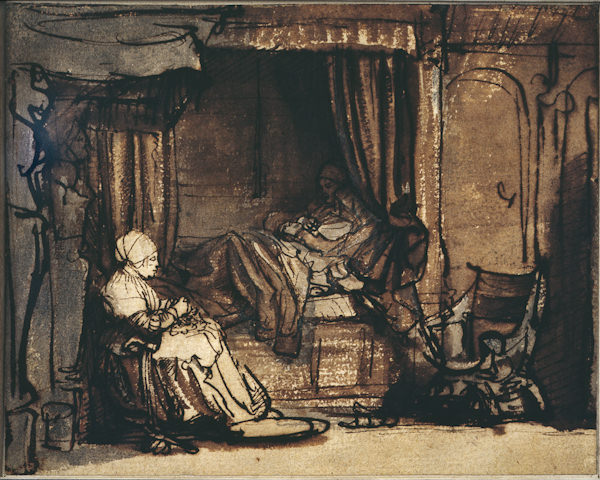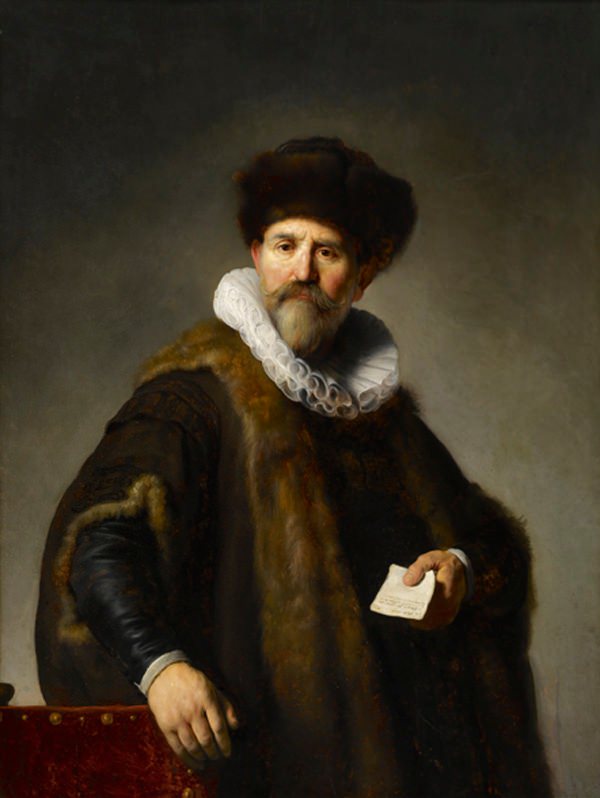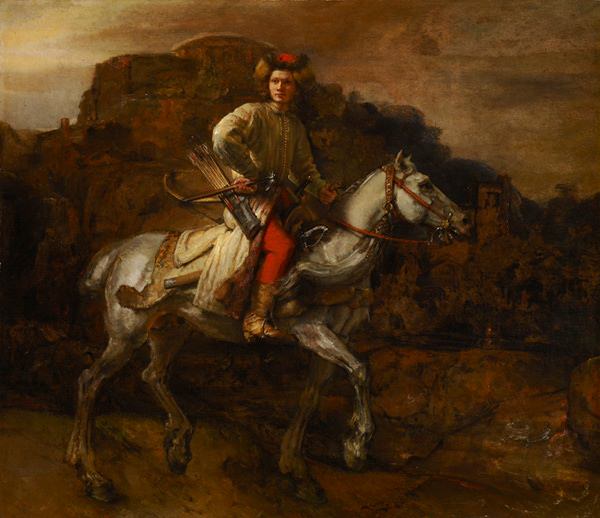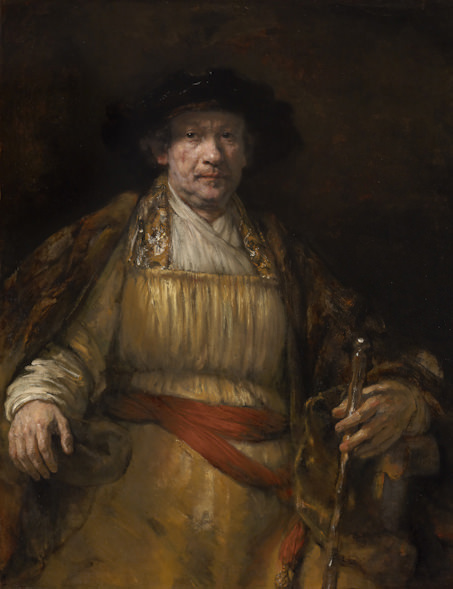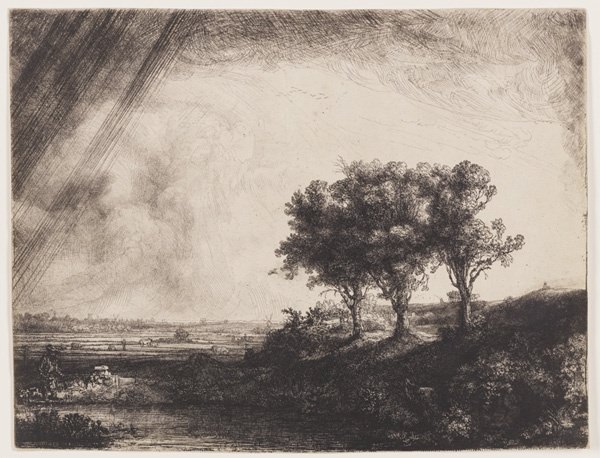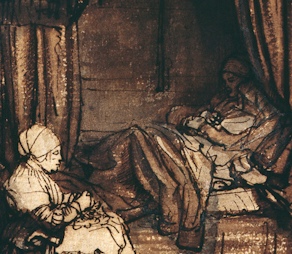New York’s august Frick Collection could never be accused of pandering to the masses. But the enthusiastic public response to two recent Rembrandt shows at the Metropolitan Museum of Art, which together attracted well over a half-million visitors, cannot have been lost on the organizers of “Rembrandt and His School: Masterworks from the Frick and Lugt Collections.”
This exhilarating new show presents more than sixty drawings and prints from the Paris foundation established in 1947 by the renowned Dutch connoisseur and scholar Frits Lugt (1884–1970) and Jacoba Klever, his heiress wife, to preserve some 37,000 works on paper he had amassed since his teens, and exhibits them alongside the Frick’s own Rembrandt paintings and prints. In the intimate (if imposing) ambience of Henry Clay Frick’s former home, one feels the embracing personality of this most humane of Old Masters.
Possessing neither the Met’s deep reserves nor space for large-scale surveys, the Frick has devised resourceful changing-exhibition strategies over the past decade. It has borrowed small groupings of notable works from institutions undergoing renovation or expansion—including Ohio’s Cleveland and Toledo museums, Pasadena’s Norton Simon Museum, and London’s Dulwich Picture Gallery— as well as major paintings, in solo, from European collections, including Raphael’s La Fornarina, Parmigianino’s Antea, and Drouais’s Madame de Pompadour.
These tightly focused displays have proved how much can be gained from looking at a limited number of objects in uncrowded, unhurried circumstances that enable the visual equivalent of a literary close reading. This luxury, nearly lost in the scrum of today’s hectic museum experience, seems no less extraordinary than the treasures on view here.
The two stars of this show—Rembrandt’s oil-on-canvas Self-Portrait (1658) and his wash-drawing Interior with Saskia in Bed (c. 1640–1642)—are antithetical in size and medium but alike in their demonstration of his Shakespearean insight into the human condition. Both pieces address their subjects with an astonishing directness and empathy that make the four centuries since their creation seem like the passing of an hour.
For this occasion the museum’s Oval Room has been rehung with five Frick paintings: two bought as Rembrandts but later reattributed to lesser contemporaries, and three undisputed works by the master. His Portrait of Nicolaes Ruts (1631), a vivid likeness of an Amsterdam fur merchant, epitomizes the artist’s mirror-smooth, minutely detailed early manner. Conversely, The Polish Rider (c. 1655)—a dashing equestrian tableau of an unidentified young bravo, its authorship once questioned but now firmly ascribed to Rembrandt—exemplifies his freer late style, with its audacious application of pigment in thick, almost expressionistic slabs and slashes.
Presiding over them all is the magisterial Self-Portrait done when the artist was fifty-two. This largest of his more than fifty paintings of himself, it was recently cleaned by Met conservator Dorothy Mahon, and it has never looked fresher or warmer, with a new ruddy flush in the sitter’s cheeks and more sparkle in his anachronistic early-sixteenth-century costume.
As the Frick’s chief curator, Colin B. Bailey, notes in the engrossing exhibition catalog, it is incorrect to interpret Rembrandt’s self-portraits as exercises in psychological self-examination. Rather, Bailey writes, they were “made for art lovers who wished to own examples of his work in an immediately recognizable style.” (One thinks of Chuck Close’s recent work, which on occasion has seemed to include more self-portraits than his earlier output, perhaps because collectors prefer them to his depictions of less-famous artist friends.)
A small room off the entry hall contains ten Rembrandt prints owned by the Frick. These impressions are impeccable, especially Landscape with Three Trees (1643), so precisely toned that one can spot an amorous couple cavorting in the thick bushes, a delightful detail often obscured in inferior, over-inked printings.
Eleven Rembrandt prints acquired by Lugt (whose exhaustive codex of auction catalogs from 1600 to 1925 makes his “Lugt numbers” as essential to the art trade as Köchel listings are to Mozart experts) are among the works displayed in two basement-level galleries, tactfully divided with drawings by his pupils and followers in one room and the master’s sketches in the other. This was wise, for despite there being some very fine sheets by Philips Koninck, Samuel van Hoogstraten, and Rembrandt’s own teacher, Pieter Lastman, among others, it is best to keep them at a safe remove from the virtuoso works of one of the consummate draftsmen of all time.
Lugt’s exceptional Rembrandt drawings range from Biblical subjects to captivating evocations of early childhood. But most memorable is Interior with Saskia in Bed, placed on a freestanding partition all by itself as befits one of Rembrandt’s supreme achievements. This domestic image is as profoundly moving in its Dutch burgherlijk way as Velázquez’s Las Meninas is in its Habsburg courtly setting.
Advertisement
Almost more a painting than a drawing, this subtly veiled layering of brown ink, brown and gray washes, with touches of red and black chalk, measures less than six by seven inches. It shows the artist’s wife, Saskia van Uylenburgh, then in her late twenties, lying in a curtained sleeping-niche after the birth of one of their children—perhaps Titus, who alone among their four offspring reached adulthood. While the recovering mother reclines in the shadows, a nurse, bathed in daylight, sits at her feet and passes the time making lace.
No more than two years after Rembrandt captured this scene Saskia died, probably of tuberculosis. Well-versed in the Classical tradition, he may well have had his wife’s approaching demise in mind when he juxtaposed her recumbent form with that of the older seated figure. As noted in the catalog for the Rijksmuseum’s 1969 retrospective on the three-hundredth anniversary of Rembrandt’s death, this preoccupied attendant “strengthens the feeling of an inevitable calamity, as if she was one of a group of Fates slowly coming to the end of Saskia’s thread of life”—like the Parcae of Roman mythology and the Norns of Nordic legend, who literally spun out human destinies with the utter indifference of Nature itself.
“Rembrandt and His School: Masterworks from the Frick and Lugt Collections,” is at the Frick Collection through May 15.

